John Gaal, Jr.
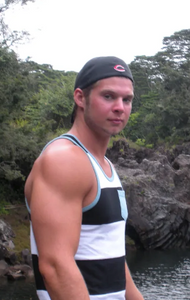
John Gaal, Jr. is a former high school football and soccer player and is remembered by those who knew him as kind-hearted, funny, and the type of person to put others before himself.
During his life, he suspected he may have CTE so his family donated his brain to the BU CTE Center, where he was diagnosed with stage I CTE. We thank the Gaal family for their generous donation and commitment to our research.
Read John’s story below.
Trigger Warning: This story mentions suicide.
John Gaal, Jr. was known for his kind-hearted nature and his ability to make the people around him laugh. He was the type of person who could make unique last-minute Christmas gifts out of the arts and crafts supplies he found at home, pull off a fake marriage proposal at the zoo, or concoct a story about accidentally bringing an etch-a-sketch instead of a calculator to a calculus exam.
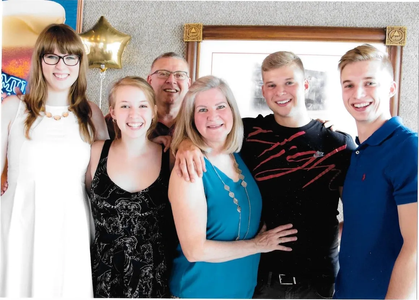
John cared about and loved many, including his parents, John and Mary, three siblings, Dana, Jake, and Leah, his best friends, his cockatiel named Fat Bird, and all the people around him whose lives he touched.
Sports played a big role in his life, and John was often the kid organizing games in his neighborhood. As a high school athlete, he played football and after transferring to Kennedy Catholic High School the summer before his junior year, he had the option to play soccer as well, which he did.
“As a dad, it was thrilling to see my sons, John and Jake, on the same field together playing football and soccer,” John said. “At the time it was just great, but well, honestly, people weren’t talking about repetitive head impacts back then.”
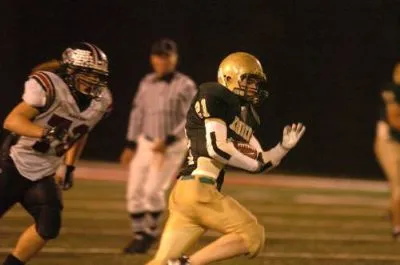 During his time playing sports, John suffered several concussions, including two within two weeks of each other. One came at the end of his senior season of high school football, where he was knocked out. He stumbled to the wrong team’s huddle and was incoherent when he spoke. Two weeks later, during a soccer game, he suffered another knock out concussion after going up for a head ball with an opposing player. Mary later learned of another concussion he sustained while playing soccer after overhearing him talking about it with a friend on the phone. At the time, people were not discussing concussions frequently and the common thought regarding them was to remove a player and have them recover for two weeks while avoiding loud sounds and electronic screens. John’s parents remember they hadn’t yet heard of second impact syndrome.
During his time playing sports, John suffered several concussions, including two within two weeks of each other. One came at the end of his senior season of high school football, where he was knocked out. He stumbled to the wrong team’s huddle and was incoherent when he spoke. Two weeks later, during a soccer game, he suffered another knock out concussion after going up for a head ball with an opposing player. Mary later learned of another concussion he sustained while playing soccer after overhearing him talking about it with a friend on the phone. At the time, people were not discussing concussions frequently and the common thought regarding them was to remove a player and have them recover for two weeks while avoiding loud sounds and electronic screens. John’s parents remember they hadn’t yet heard of second impact syndrome.
 Besides sports, John also had a passion for cooking. He studied health and nutrition in college including a semester in Florence, Italy. Over summer breaks, he was known for inviting friends over to cook for and entertain them.
Besides sports, John also had a passion for cooking. He studied health and nutrition in college including a semester in Florence, Italy. Over summer breaks, he was known for inviting friends over to cook for and entertain them.
They recall the first time, back in 2012, that they had a hint something may be wrong. When his youngest sister, Leah, was transported by ambulance to the ER after sustaining injuries, including a concussion, in a car accident, he called his parents to tell them to drop everything to make sure she was taken care of because “the [concussions] I’ve had from high school sports have really started to play hell with me.” At the time they were surprised to hear this, but he never brought it up again until late 2016.
During his life, John and his family members had done research into the changes they noticed, and a few had suspicions that he may be suffering from CTE. They recalled how “things were probably worse than we realized for longer than we thought because he was really good at faking it.”
 In the fall of 2016 his suffering became more noticeable to his older sister, Dana, a doctor of pharmacy, whom he confided in. His father recalls the time he heard about a master’s program in social work that he knew would be perfect for John. He brought him home a brochure with information on it and John responded, “I need to take care of myself first before I start looking at a program like this.” He said he had to get his head better.
In the fall of 2016 his suffering became more noticeable to his older sister, Dana, a doctor of pharmacy, whom he confided in. His father recalls the time he heard about a master’s program in social work that he knew would be perfect for John. He brought him home a brochure with information on it and John responded, “I need to take care of myself first before I start looking at a program like this.” He said he had to get his head better.
At this point, he became more isolated and his group of close friends and contacts got smaller. “He was stagnant, you know, because of this disease. Since they had graduated in May of 2015, most of his group were moving to other cities, getting jobs, or getting raises to other positions and he realized that that really wasn’t in the cards for him at that point until he got better,” they said. “And he didn’t see himself getting better because he couldn’t get the help he desired.”
Mary described times that John was working on projects around the house and he’d have to go back to the store two or three times to get different supplies because it wasn’t turning out right, which was unusual for him; one of his jobs during college was installing retaining walls and shelving units at people’s houses.
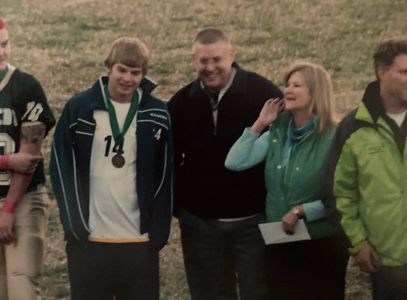 They noticed his demeanor changed and he started having bouts of rage, even over things they described as seemingly minor. After becoming “fired up for nothing” he’d storm off and usually return about twenty minutes later with an apology and acknowledging that he did not know why he behaved that way. His memory began to get worse, to the point where he had no recollection of a doctor’s appointment from the day before.
They noticed his demeanor changed and he started having bouts of rage, even over things they described as seemingly minor. After becoming “fired up for nothing” he’d storm off and usually return about twenty minutes later with an apology and acknowledging that he did not know why he behaved that way. His memory began to get worse, to the point where he had no recollection of a doctor’s appointment from the day before.
“He had so much fun and personality that when he started losing track of things, that frightened him,” Mary said. “That scared him big time.” A few weeks before John died, he came to her and asked “if he seemed different.” He then went on to say that “he no longer recognized himself and did not know how to get himself back.”
They also recall that during his struggles he still cared for other people. “During the process of him going into his demise… he was still willing to put himself aside and have concerns about how this affected other people.”
 After John took his life at the age of 24, his family donated his brain to the BU CTE Center where he was diagnosed with stage I CTE. At John’s funeral, around a thousand people attended. “I thought that spoke volumes about his character,” they said. “People that we didn’t know who he went to high school with attended and told us stories while others wrote us letters.”
After John took his life at the age of 24, his family donated his brain to the BU CTE Center where he was diagnosed with stage I CTE. At John’s funeral, around a thousand people attended. “I thought that spoke volumes about his character,” they said. “People that we didn’t know who he went to high school with attended and told us stories while others wrote us letters.”
One high school classmate recalled that John always wanted to help people to be the best versions of themselves. This was evident in the way John lived his life and tried to help others around him. After graduating college, on his way to work, he drove through an area with a large homeless population and he would pack sandwiches and hand them out on the way, eventually getting to know the people he was helping by name.
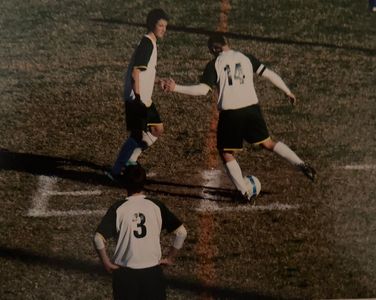 John’s family has since started the 21-14 Concussion Awareness Foundation in John’s honor (21 for his high school football number and 14 for his high school soccer number). 21-14 CAF aims to provide education and assistance with research related to head injuries as well as taking an active role in helping people in need by improving access to mental health services and educational opportunities.
John’s family has since started the 21-14 Concussion Awareness Foundation in John’s honor (21 for his high school football number and 14 for his high school soccer number). 21-14 CAF aims to provide education and assistance with research related to head injuries as well as taking an active role in helping people in need by improving access to mental health services and educational opportunities.
They also emphasize that they would never try to tell anyone to stop playing sports. “I want to go on the record that in no way, shape or form will we ever say we need to do a full stop on soccer and football… tweaking it to make it safer, but… I would never tell any of my nieces, nephews, great nieces/nephews not to have their kids play sports.” They talk about how making changes to the games to eliminate needless injuries would have a big impact on players. “In most of these events, they’re not life or death, but we’re making it life or death by putting people in the wrong situation like that.”
 They continue to share John’s story in the hope that it can help others. “There’s definitely lessons to be learned from loss and tragedy so if we can prevent another family from living this daily nightmare that we live it’s all worth it.”
They continue to share John’s story in the hope that it can help others. “There’s definitely lessons to be learned from loss and tragedy so if we can prevent another family from living this daily nightmare that we live it’s all worth it.”
John’s legacy goes far beyond the work he did to help others and even today he is always remembered by his closest friends; they continue to invite John and Mary to their weddings, baby showers, and other important life events. One friend who wanted John Jr. to be his best man even asked his father to stand in as best man in his son’s place.
A family friend once summed up John’s impact and personality well: “You don’t need to keep telling people that he was a good kid. Everybody already knows!”
 John’s diagnosis was made by Dr. Thor Stein at the BU CTE Center. If you would like to support the BU CTE Center and help fund the research that makes these diagnoses possible, you can donate here.
John’s diagnosis was made by Dr. Thor Stein at the BU CTE Center. If you would like to support the BU CTE Center and help fund the research that makes these diagnoses possible, you can donate here.
If you or a loved one are interested in brain donation, please view our Frequently Asked Questions (FAQs) and brain donation brochures for more information.
You can visit our Resources page to find resources for anyone struggling with suspected CTE symptoms. If you or someone you know is having suicidal thoughts, you can reach the 988 Suicide & Crisis Lifeline by calling 988 or 1-800-273-TALK[8255].
Learn more about the 21-14 Concussion Awareness Foundation here.
This story was written by Amanda V. Cabral at the BU CTE Center. If you are interested in having a donor story written for your loved one, please reach out to her at avcabral@bu.edu.